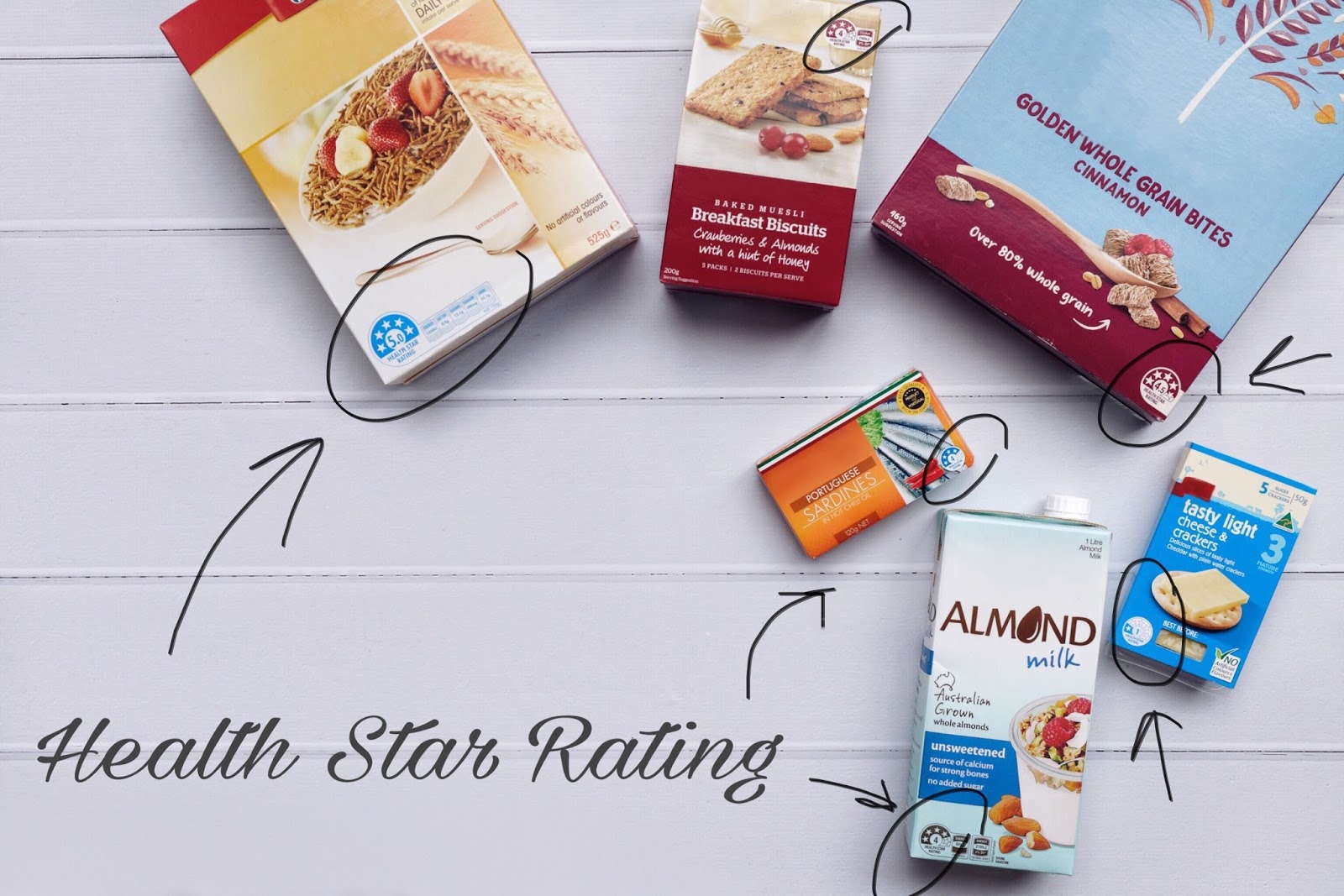I don't know about you, but I am one of those annoying
people who stand in the aisle studiously staring at the Nutritional Information
Panel on a shelf item before placing it into my shopping trolley. Being
in charge of the grocery shopping in my household means I am very conscious of
what I buy to feed Mr Brigs and my two little ones, to ensure I am contributing
to their health and nutrition whenever possible with choices that help
contribute to a balanced diet.
In recent years the Health Star Rating (HSR) system has been introduced, which has greatly helped me when choosing a product in the supermarket aisle. The Health Star Rating is a voluntary front-of-pack food labelling system which provides an at-a-glance comparison using stars, from half a star to five, between similar packaged and processed food.
The Health Star Rating of each product is based on the
amount of saturated fat, sugar and sodium it contains per 100g or 100ml, as
well as its total energy (kilojoules). High amounts of saturated fat,
sugars, sodium (salt) and energy (kilojoules) are considered negative factors,
as they are linked to an increased risk of obesity and diet-related chronic
disease, such as cardiovascular disease or type 2 diabetes, if consumed in
excess of dietary guidelines. Products may score extra points and
potentially higher ratings depending on the proportion of positive ingredients
they contain such as fibre, fruit, nut, legume, vegetables and protein.
Essentially, the more stars on the
front of pack, the healthier the choice.
This HSR system provides an easy way for me to quickly
compare similar packaged products (rather than studying each product for as
long as I used to), to choose the healthier option. Not all stars are
created equal though, the 1 star on the 'cheese + crackers' is not to be
compared with the stars on the sardines, for example. The system is used to
compare between similar products. I can compare breakfast cereals with
breakfast cereals or muesli bars with muesli bars for example, but not between
vastly different products, such as yoghurt and frozen lasagne. The system
makes it easier for us to identify the healthier option, enabling us to compare
products in the same section of the supermarket and help us think more about
nutrition when buying food.
Currently more than 5,500 products from at least 115 companies,
carry the Health Star Rating. The system has also influenced manufacturers to
reformulate their products to improve their nutrient profile, resulting in
improved health star ratings, a win win for all.
A few items in my pantry and fridge:
At the supermarket:

and how I quickly throw just a few simple ingredients for a healthy breakfast and/or snack of chia seed pudding (below):
The HSR system has even been helpful when shopping for the little ones as they ask for those sugary cereals, and I point out the low-star rating, so we chose a higher star-rated cereal instead. It helps stir their interest in choosing the right foods, and discuss nutrition, which extends the information they already gaining at Kindy and Primary School. In fact, even my littlest one always asks me: "Mummy, is this one healthy?"
We all know balanced lunchbox should contain a variety of nutritious foods from each of the five food groups – grains, fruits, vegetables, dairy and protein. If you include packaged snacks in lunchboxes (or just as a snack at the desk) in addition to fresh fruit and vegetables, the Health Star Rating can be a helpful tool to help choose between similar packaged and processed products (for example, a well-advertised and popular lunchbox 'snack bar' only had 1 star, so I opted for the 4 star bar below, and similarly the 1 star cheese and cracker pack, as opposed to the half-star pack that was sitting next to it on the refrigerated shelf:
If you want to find out more about the HSR, the FAQs on the HSR official website are very helpful to answer some questions.
What about you, have you used the HSR to help you choose your shopped items?
This
post is in collaboration with Health Star Rating.
All images by me.





Great post! Useful to know, will be checking out the health star ratings whenever I'm shopping from now on ������⭐️⭐️⭐️⭐️⭐️����
ReplyDeleteBe careful with almond milk Clarice - it often has carrageenan in it which is not good.
ReplyDeleteSharon x
Be careful with almond milk Clarice...it often has carrageenan in it which is not good.
ReplyDeleteSharon x
P.S. It's been a long time since I've visited your blog but I was one of the very first to read it when you first started. We had some nice chat. :)